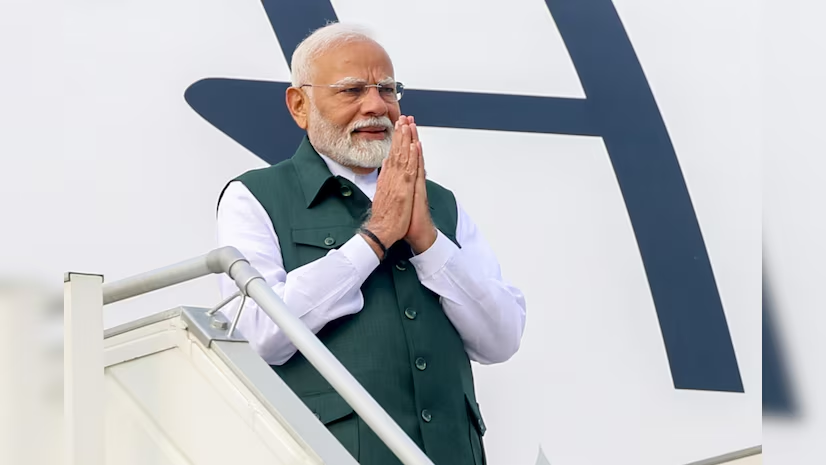The bilateral relationship between India and Singapore has grown significantly over the years, marked by strong economic, strategic, and cultural ties. Today’s visit by Indian Prime Minister Narendra Modi to Singapore further underscores the commitment of both nations to deepen this partnership. This analysis delves into the multifaceted aspects of India-Singapore relations and highlights the key developments and areas of cooperation that were emphasized during Modi’s visit.
1. Economic Cooperation
Trade and Investment: India and Singapore have a robust economic relationship, characterized by substantial trade and investment flows. As of the latest figures, Singapore is one of India’s top trading partners, with bilateral trade exceeding $30 billion annually. Both countries have worked to enhance trade ties through agreements such as the Comprehensive Economic Cooperation Agreement (CECA), which has facilitated increased market access and reduced trade barriers. During Modi’s visit, discussions were held to further strengthen these economic ties, with a focus on expanding investment in sectors like technology, infrastructure, and clean energy.
Infrastructure and Development Projects: Singapore has been a key partner in various infrastructure projects in India, including urban development and smart city initiatives. The Singapore government has been involved in the development of key urban infrastructure projects in Indian cities like Pune and Ahmedabad. Modi’s visit emphasized the importance of continuing and expanding these collaborations, particularly in the areas of sustainable urban planning and smart city development.
2. Strategic and Defense Relations
Defense Cooperation: India and Singapore share a strong strategic partnership with significant defense cooperation. Both nations conduct regular joint military exercises and have a history of collaboration in maritime security. The visit highlighted the commitment to enhancing this defense partnership, with discussions focusing on increasing joint training exercises and strengthening maritime security cooperation in the Indo-Pacific region.
Strategic Alignment: Both countries have a shared interest in maintaining a free, open, and inclusive Indo-Pacific region. Singapore supports India’s strategic vision in the Indo-Pacific and has been an advocate for regional stability. Modi’s visit underscored the alignment of their strategic interests and the importance of continuing their collaborative efforts in regional security and maritime domain awareness.
3. Cultural and People-to-People Ties
Cultural Exchanges: Cultural diplomacy plays a crucial role in the India-Singapore relationship. Both countries benefit from a rich cultural exchange, including art, music, and education. The Indian diaspora in Singapore is a vital link between the two nations, contributing to the cultural and social fabric of Singapore. During Modi’s visit, initiatives to promote further cultural exchanges and people-to-people interactions were highlighted, reinforcing the cultural bonds between the two nations.
Educational and Academic Cooperation: Educational collaborations between India and Singapore have been expanding, with increasing numbers of Indian students pursuing higher education in Singaporean institutions. Singapore’s universities and research institutions have partnered with Indian counterparts on various academic and research projects. Modi’s visit emphasized the importance of enhancing educational exchanges and joint research initiatives, reflecting a shared commitment to fostering innovation and knowledge transfer.
4. Technological and Innovation Partnerships
Digital Economy: Both India and Singapore are focusing on advancing their digital economies. Singapore’s expertise in technology and digital infrastructure aligns well with India’s digital ambitions. The visit saw discussions on enhancing cooperation in areas such as fintech, cybersecurity, and smart city solutions. Initiatives to promote joint ventures and collaborative research in emerging technologies were also a key focus, aiming to leverage Singapore’s technological advancements to support India’s digital transformation.
Innovation and Start-ups: Singapore has emerged as a significant hub for innovation and start-ups, and India is keen on strengthening ties in this sector. Modi’s visit highlighted the potential for collaboration between Indian and Singaporean start-ups, with a focus on fostering innovation ecosystems and providing support for start-up ventures. Both countries are exploring ways to create synergies between their innovation hubs and entrepreneurial ecosystems.
5. Environmental and Sustainable Development
Climate Change and Sustainability: Both India and Singapore are committed to addressing climate change and promoting sustainable development. The visit included discussions on collaborative efforts in clean energy, climate resilience, and environmental sustainability. Initiatives such as joint research on renewable energy technologies and cooperation in climate action plans were emphasized, reflecting the shared commitment to tackling global environmental challenges.
Conclusion
Narendra Modi’s visit to Singapore serves as a testament to the deepening bilateral ties between India and Singapore across various domains. The discussions and agreements reached during this visit are expected to further strengthen their economic, strategic, and cultural partnership. Both nations are poised to benefit from enhanced cooperation in trade, defense, technology, and sustainable development, reflecting a mutual commitment to a prosperous and collaborative future.





